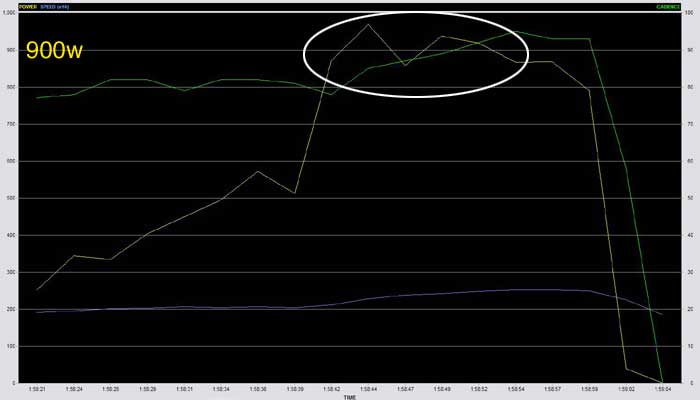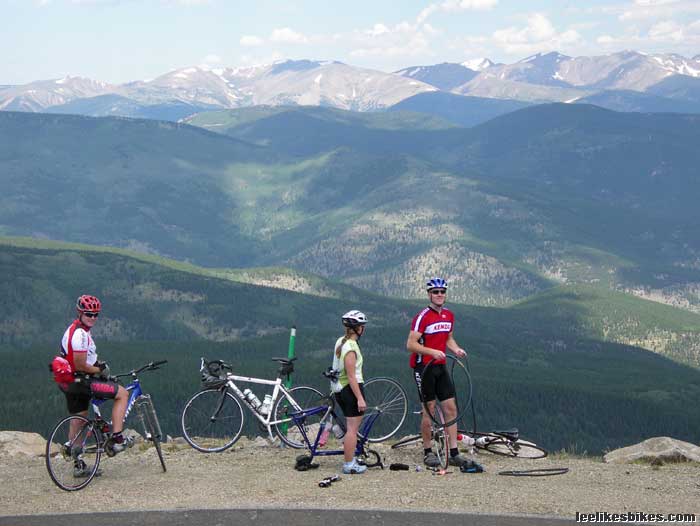It’s all about the watts

Yesterday I joined local stud Jon Watt for a 2.5-hour road ride. It was all about watts — in more way than one.
|
The more you click, the more I can post. Lee Likes Groceries dot com! |
 Yellow is power. Green is cadence. Blue is speed. From the CycleOps PowerTap system. |
CycleOps PowerTap rear hubs seem like the ultimate training tool. I wrote some promo copy about them on Friday, and when I met Jon for our Sunday ride, he had one. Cool! This system measures your actual wattage — the only true indicator of your power — and lets you upload the data to your computer for rocking chart action.
Our local boy Jon Watt is directly descended from the famous engineer James Watt. In the 1700s James was working with ponies lifting coal out of a coal mine, and he wanted to standardize the power made by these beasts. He found that, on average, a mine pony could lift 22,000 pounds one foot in one minute. He increased that number by 50 percent to get 33,000 foot-pounds, and he called that a horsepower.
So James Watt coined the term howsepower. 63 years after he died, the British Association named the unit of electrical power after him. Hence 100-watt bulbs and PowerTap wattage meters.
How fitting, then, that I continually asked Jon Watt what his current wattage was. Easy cruising was about 200, and carrying speed over a short rise was 300. About 35 miles into our 41-mile adventure, I was getting tired, but I saw an overpass in the distance. “Jon, this is probably a bad idea, but let’s sprint to the top.”
I took off early and gapped Jon. As I started to fizzle, he caught and passed me. We held about 900 watts for 20 seconds or so, and we peaked at about 950 watts.
A horsepower is 746 watts.
 Jon fixes a flat high on Mt. Evans, the highest paved road in the U.S. What a tough day — Extreme uphill: Mt. Evans |

Comments are closed.